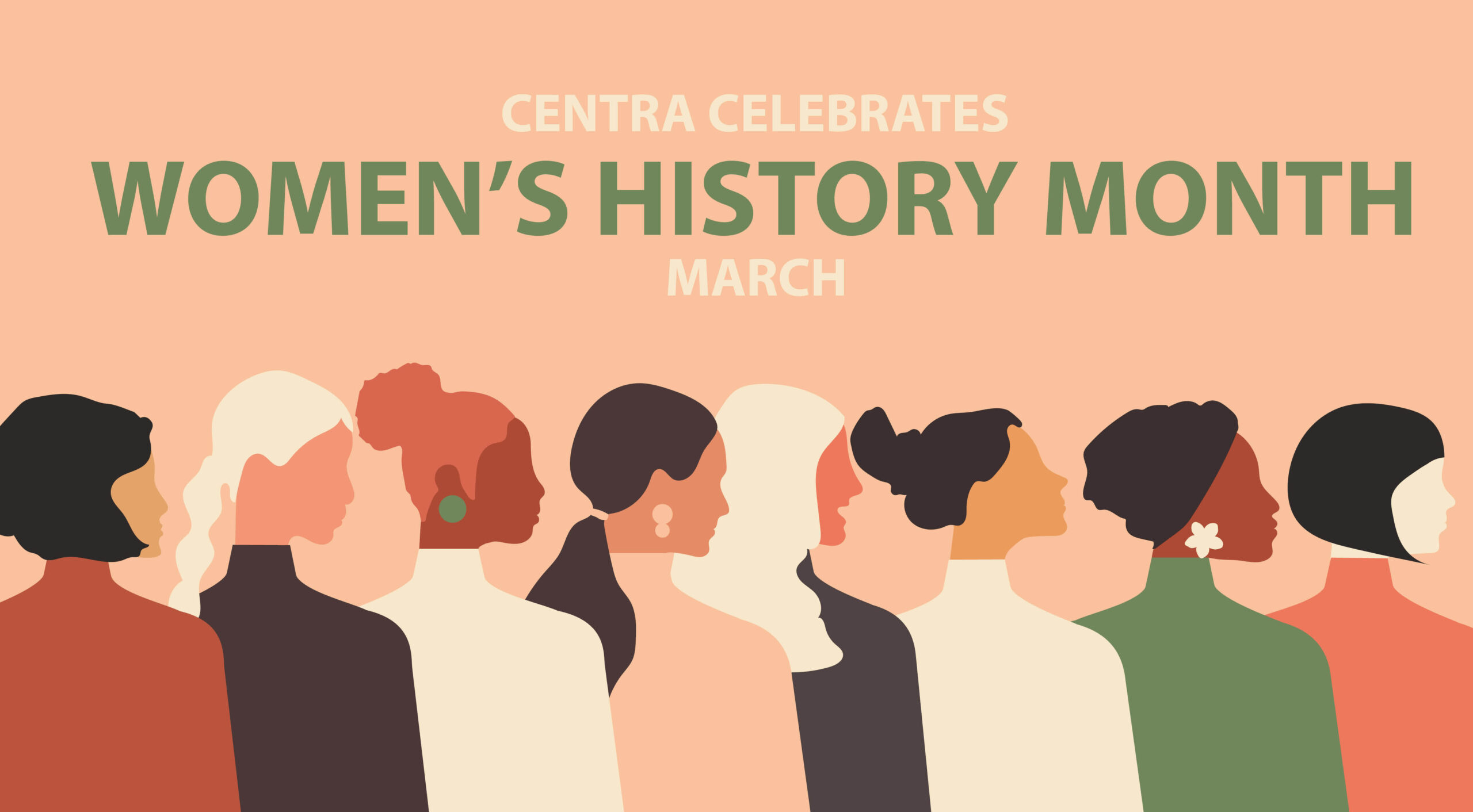Celebrating Women’s History Month

At Centra we strive to promote diversity, equity, and inclusion within the Communities we serve and in our workplace. Recognizing Women’s History Month supports this vision.
The history of the celebration
Women’s History Month began as a small celebration in Santa Rosa, California in 1978. A couple years later, President Jimmy Carter issued the first Presidential Proclamation declaring the week of March 8 to be National Women’s History Week.
After petitions from the National Women’s History Project, Congress passed Public Law 100-9 in 1987. This expanded the celebration from a week to a month, creating what we now know as Women’s History Month!
Women in the workplace
Women make up a significant portion of the workforce, with their participation in the labor force increasing consistently throughout the latter half of the 20th century. However, women are still often underrepresented in leadership.
On the other hand, Centra has a strong history of women in leadership, which continues today. With more than 60% of Centra’s current leadership consisting of women, we encourage the women in our organization to pursue their career goals, no matter the role!
In addition, Centra’s previous CEO, Loretta M. Burd, served for 25 years! She’s regularly recognized for her contributions to Centra throughout her career and during her time as CEO. Our scholarship program and boardroom in our headquarters are even named in her honor! After retirement, she went on to serve on Centra’s Board of Directors for ten years.
Financial challenges for women
Throughout history, women have had to fight for the right to financial freedom. This required overcoming many barriers, including the right to banking, the right to work, and the right to lending.
- While women had some opportunities to work, there was no federal law prohibiting discrimination based on gender until 1968.
- While California was the first state to allow women to open a bank account in 1862, federally, women didn’t gain the right to full banking services until more than a century later in 1974.
- Women could open bank accounts in the 1960s, but many banks wouldn’t allow women to have credit cards or open checking accounts without their husband’s permission.
- While women could own property in their own name by 1900, there was no law prohibiting housing discrimination against women until 1974.
In spite of the financial challenges, some women paved their own path. For example, Maggie Lena Walker opened the first female-founded bank in America. On top of the obstacles of female-founded business, Walker was also African American, making her story even more remarkable.
Want to learn more?
Here are some great articles for additional information on the barriers women have faced through the years and how we as a country have fought to break them:
Timeline: The Women’s Rights Movement in the U.S.
The history of women’s work and wages and how it has created success for us all














